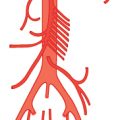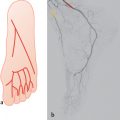1 Introduction
Textbooks on anatomy, radiology, and surgery usually describe only the “normal” arterial blood supply. However, for some arteries this “normality” is found in less than 30% of all patients, whereas for other arteries it is found in over 95% of patients. Rarely mentioned are deviations in an artery’s origin, its topographical localization, or the area it supplies. Such deviations can be classified into two groups: malformations and variations. Malformations often have a negative influence on the function of the given organ under normal circumstances—for example, this is the case if both coronary arteries originate from the pulmonary artery. In the current book, this group will be dealt with in only a few instances. Variations, by contrast, generally have no effect on the function of the organ under normal circumstances—for example, a superficial brachial artery does not have a negative effect on the function of the forearm and hand. However, should the superficial artery be mistaken for a vein and should a thiobarbiturate be injected, severe necrosis of the hand would result. Thus, even a harmless variation can have negative effects under certain circumstances.
Stay updated, free articles. Join our Telegram channel

Full access? Get Clinical Tree








